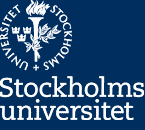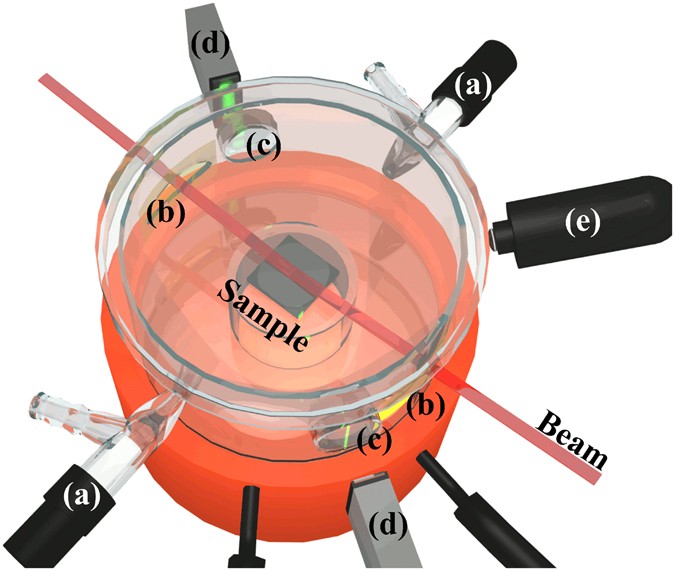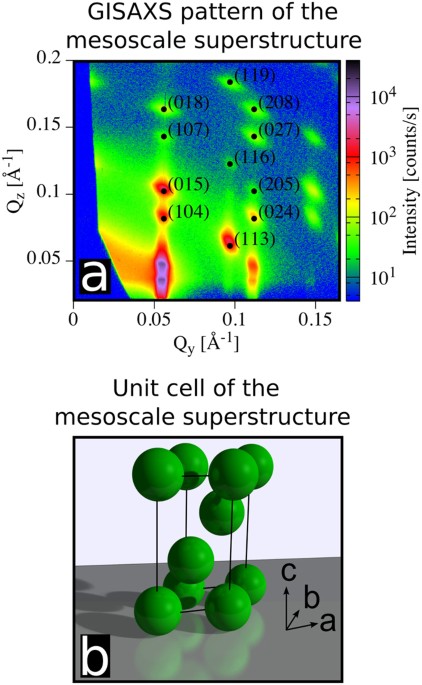PhD student in Materials Chemistry (B) - Ref. No. SU FV-3278-18
at the Department of Materials and Environmental Chemistry. Closing date: 5 November 2018.
The Department of Materials and Environmental Chemistry (MMK) is one of the largest departments at the Faculty of Natural sciences with about 130 employees. The research activities of MMK are in the areas of Materials and Solid-state Chemistry focusing on different classes of materials; e.g. ceramics and glasses, self-assembled and porous materials, and soft matter. The work often encompasses synthesis, characterisation by X-ray diffraction and electron microscopy, NMR studies, modelling with computer simulations of materials with a potential for various applications. Environmental aspects are an important part of the research activities.
Project description Project title: Neutron scattering as a multiple length scale probe for functional nanomaterials.
Supervisor: Associate Prof. German Salazar Alvarez, german.salazar.alvarez@mmk.su.se.
The project will focus on studying different types of nanomaterials with neutron scattering at the atomic (diffraction) and nanoscopic (small angle neutron scattering, SANS) levels. The work implies comprehensive experiments with neutron scattering in neutron facilities around the world with focus on the multiple length scale approach. The work also includes development, and testing of different sample environments for in-situ characterisation of nanomaterials.
The project is a collaboration between Stockholm University (SU), Uppsala University (UU), and the European Spallation Source (ESS) and has as a long-term plan to expand the neutron diffractometer DREAM at the ESS in Lund to study nanomaterials. Within the project, we will design different sample environments to enable the simultaneous acquisition of data in two length scales (atomic and nanoscopic). In this way, the connection between the variations in the crystal structure and nanoparticle morphology can be established. This will be used to study three different materials classes that have a strong research tradition in Sweden: biomaterials, batteries, and magnetic materials. Some examples of the possible studies include self-assembly of small cellulose fibres, how the structure of batteries changes during usage, or how magnetic nanoparticles assemble under an applied magnetic field. The project is financed by the Swedish Research Council.
The successful candidate should have a background in chemistry or materials science with an interest in utilizing characterization methods such diffraction with Rietveld analysis and/or small-angle scattering. Experience in PDF-analysis of nanomaterials is advantageous. Knowledge of TEM is meritorious but not a requirement.
Qualification requirementsIn order to meet the general entry requirements, the applicant must have completed a second-cycle degree, completed courses equivalent to at least 240 higher education credits, of which 60 credits must be in the second cycle, or have otherwise acquired equivalent knowledge in Sweden or elsewhere.
In order to meet the specific entry requirements, the general syllabus for doctoral studies in the field of Materials chemistry is valid. Those studies should include at least one specialized course or a thesis in the research subject. In order to facilitate the evaluation of merits and suitability for the PhD studies your curriculum vitae (CV) should contain information about the extent and focus of the academic studies. The quantity (as part of an academic year) and the quality mark of courses in chemistry and physics are of particular interest. Please, state titles of undergraduate theses and project works.
The primary assessment criteria in appointing a doctoral student should be the capacity to benefit from the training. The qualification requirements must be met by the deadline for applications.
SelectionThe selection among the eligible candidates will be based on their capacity to benefit from the training. A committee will go through the applications and rank after the applicants capacity to benefit from a PhD education. The following criteria will be used to assess this capacity: the candidates’ documented knowledge in a relevant field of research, written and oral proficiency in English, the capacity for analytical thinking, the ability to collaborate, as well as creativity, initiative, and independence. The assessment will be based on previous experience and grades, the quality of the degree project, references, relevant experience, interviews, and the candidate’s written motivation for seeking the position. A short list will be set up and interviews with the top candidates will be carried out at the department or via internet.
Economic support for the PhD studies are guaranteed for full time studies during the time period agreed on in the individual study plan. The studies does normally mean four years full time studies. You are encouraged to contact the project leader for more information about the project. For general information about the Department of Materials and Environmental Chemistry please contact the Head of the Department, Professor Gunnar Svensson, gunnar.svensson@mmk.su.se.
Admission Regulations for Doctoral Studies at Stockholm University are available at: www.su.se/rules.
Terms of employment Only a person who will be or has already been admitted to a third-cycle programme may be appointed to a doctoral studentship.
The term of the initial contract may not exceed one year. The employment may be extended for a maximum of two years at a time. However, the total period of employment may not exceed the equivalent of four years of full-time study.
Doctoral students should primarily devote themselves to their own education, but may engage in teaching, research, and administration corresponding to a maximum of 20 % of a full-time position.
Please note that admission decisions cannot be appealed.
Stockholm University strives to be a workplace free from discrimination and with equal opportunities for all.
Contact
For more information, please contact Associate Prof. German Salazar Alvarez, telephone: +46 8 16 39 42, german.salazar.alvarez@mmk.su.se.
For more information, please contact Associate Prof. German Salazar Alvarez, telephone: +46 8 16 39 42, german.salazar.alvarez@mmk.su.se.
Union representatives
Ingrid Lander (Saco-S), telephone: +46 708 16 26 64, saco@saco.su.se, Lisbeth Häggberg (Fackförbundet ST and Lärarförbundet), telephone: +46 8 16 20 00 (operator), seko@seko.su.se(SEKO), and PhD student representative, doktorandombud@sus.su.se.
Ingrid Lander (Saco-S), telephone: +46 708 16 26 64, saco@saco.su.se, Lisbeth Häggberg (Fackförbundet ST and Lärarförbundet), telephone: +46 8 16 20 00 (operator), seko@seko.su.se(SEKO), and PhD student representative, doktorandombud@sus.su.se.
Application
Apply for the PhD student position at Stockholm University's recruitment system. It is the responsibility of the applicant to ensure that the application is complete in accordance with the instructions in the advertisement, and that it is submitted before the deadline.
Apply for the PhD student position at Stockholm University's recruitment system. It is the responsibility of the applicant to ensure that the application is complete in accordance with the instructions in the advertisement, and that it is submitted before the deadline.
Please include the following information with your application
- Your contact details and personal data
- Your highest degree
- Your language skills
- Contact details for 2–3 references
and, in addition, please include the following documents
- Cover letter
- CV – degrees and other completed courses, work experience and a list of degree projects/theses
- Project proposal/Research proposal describing:
– why you are interested in the field/project described in the advertisement
– why and how you wish to complete the project
– what makes you suitable for the project in question - Degree certificates and grades confirming that you meet the general and specific entry requirements (no more than 6 files)
- Letters of recommendation (no more than 6 files)
- Degree projects/theses (no more than 6 files).
The instructions for applicants are available at: Instructions – Applicants.
You are welcome to apply!
Stockholm University – our education and research produce results.
URL to this pagehttps://www.su.se/english/about/working-at-su/phd?rmpage=job&rmjob=7028&rmlang=UK







